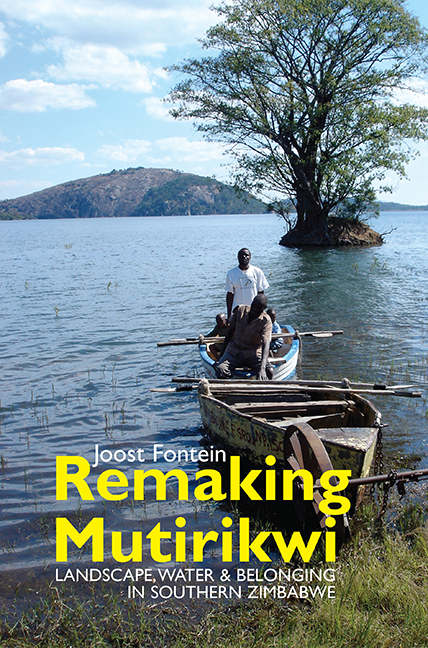Book contents
- Frontmatter
- Dedication
- Contents
- Illustrations
- Acknowledgements
- Note on Fieldwork, Notes & Sources
- Glossary
- Acronyms & Abbreviations
- Chronology
- Remaking Mutirikwi: An Introduction
- Part One Remaking Mutirikwi in the 2000s
- Part Two Damming Mutirikwi 1940s–1990s
- Epilogue: Remaking Mutirikwi in the late 2000s & early 2010s
- Bibliography
- Index
- Eastern African Studies
7 - Remaking Fort Victoria’s Landscapes, 1950s–1960s
Published online by Cambridge University Press: 11 June 2021
- Frontmatter
- Dedication
- Contents
- Illustrations
- Acknowledgements
- Note on Fieldwork, Notes & Sources
- Glossary
- Acronyms & Abbreviations
- Chronology
- Remaking Mutirikwi: An Introduction
- Part One Remaking Mutirikwi in the 2000s
- Part Two Damming Mutirikwi 1940s–1990s
- Epilogue: Remaking Mutirikwi in the late 2000s & early 2010s
- Bibliography
- Index
- Eastern African Studies
Summary
This chapter begins by focusing on the debates of the 1950s about which dams (Popotekwe, Kyle or Bangala) to build on the Mutirikwi river system. Engaging with Ingold's efforts to close the gap between imagining and perceiving landscape – what I term the materialities of imagination – it explores how minute material engagements with the affordances of soil, topography and hydrology were caught up in the divergent demands of Victoria residents and the lowveld sugar industries. Although the grandiose imagined futures of irrigation planning were important for what happened – that the long-muted Popotekwe dam was never built and Mutirikwi's waters were primarily harnessed for industrialising the lowveld – this was never a foregone conclusion. It depended on the changeable catchment, water flow, topography, soil type, productivity and profitability surveys and calculations of water planners in the 1950s. The implications of these calculations – of the political materialities of their imagination and becoming – were quite significant. Extended discussions about augmenting Fort Victoria's unreliable water supplies from the lake matched the disappointed expectations of neighbouring farmers that they too might benefit from its waters. Farmers who lost land to the lake did receive compensation and some drew from its waters, but not very many. Those that did could grow wheat and maize commercially. But the remaking of Fort Victoria's landscapes heralded by Kyle would not fulfil the wilderness-taming aspirations and ordering aesthetics of huge irrigated landscapes, as in the lowveld (cf. Wolmer 2007:99–100). Rather, it manifested something closer to another strand of white settler belonging that revolved around European sensibilities for watery shorelines, wilderness, wildlife and nature (cf. Hughes 2010).
It is remarkable how often Lake Mutirikwi is described in terms of its beauty and aesthetic appeal, even more so that this was already imagined long before the dam was built. But this appeal to wilderness was not inevitably linked to notions of pristine ‘old Africa’. It was much more future and development orientated than that. It related to long-standing demands for improved infrastructure to make Fort Victoria a ‘holiday playground’ to ‘seriously challenge any comparison by any inland tourist areas’. Such demands recalled the 1900s, when the railway's anticipated arrival (Sayce 1978:117) promised increased visitors to the town. With the dam's completion, local newspapers and noisy associations pressed for development with renewed vigour.
- Type
- Chapter
- Information
- Remaking MutirikwiLandscape, Water & Belonging in Southern Zimbabwe, pp. 197 - 229Publisher: Boydell & BrewerPrint publication year: 2015



